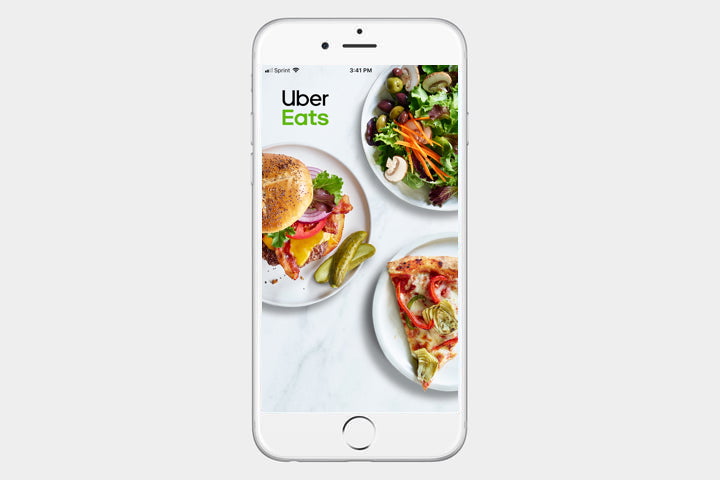Innovation in the tech industry moves at a breakneck pace, and 2018 was a fantastic example of that.
Wireless companies took gigantic steps towards 5G (including merging to get there), while Google wowed us with its Duplex AI. Despite Bitcoin’s precipitous fall in value, blockchain technology continued to evolve, and Amazon showed it’s serious about Alexa, gobbling up smart home companies — and releasing a few new Alexa products of its own.
2019 might not move as fast innovation-wise, but it is likely the year where some long-hyped tech finally sees the light of day. What will we be talking about? Let’s take a look, but first, let’s see how well we did with our 2018 predictions.
Looking Back at Our 2018 Predictions
Unlike our 2017 predictions, 2018’s predictions weren’t as clearly spot-on as we would have lliked.Were we wrong? Maybe. In some cases, it’s unclear whether what we predicted actually happened, or we might need another year or so to understand the ramifications.
For example, we predicted a breakout year for the blockchain. Bitcoin’s crash in value during the year commanded most of the headlines, and may have stymied interest in blockchain overall. But I’ll argue the market value of Bitcoin is not tied to the usefulness of blockchain technology, which really did take off.
With ARM-powered laptops — we said ARM laptops would be everywhere — the same could be said. Big name companies like HP and Asus shipped new ARM laptops (the Envy X2 and the NovaGo respectively) during the year, and more are on the way. But the first laptops have been disappointing. They’re very slow, suffer from compatibility issues with many apps, and often come with minute storage capacity. It’s early, so 2019 should decide once and for all if ARM is a feasible platform for future always-on laptops with crazy battery life.
- 1. Bitcoin
- 2. Asus NovaGo
- 3. Google Assistant
- 4. 3rd-generation Echo Dot
Edge computing is also another trend that we can’t say has completely taken hold yet, even though we predicted that edge computing would shake up how we think about the cloud.
Still, there has been tons of work behind the scenes, and this is going to become very important in 2019 and beyond with the advent of 5G networks. Storing everything in the cloud isn’t going to work, and could create significant bandwidth issues in very short order as just about everything from your car to your toothbrush wants to connect to the Internet.
We’re more confident in our predictions of the death of the smartphone and the rise of touchless interfaces. In 2018, both app developers and phone manufacturers built even more artificial intelligence into our phones, and Apple, Google, and Amazon all worked to improve their products to require less direction of our virtual assistants and to better anticipate our needs.
Our predictions just seemed to reach a bit too far without factoring in the considerable time it takes to reach mass adoption. So we’re dialing it back a bit for this round of predictions, but there are still a lot of exciting things in the pipeline that are almost sure to be more than just vaporware or wishful thinking. Here’s what we predict will be big in 2019
Real 5G finally arrives
Nothing causes an argument in the mobile industry quite like 5G. For the better part of the latter half of this decade, 5G has been touted as the beginning of a truly always-on, super-fast mobile broadband connection that would replace the landline once and for all, even in fixed applications. But there’s been one problem: Nobody could agree on what 5G actually was.
That changed in 2018. We now have a specification, as well as actual technologies that will meet these specs. While much of this year was spent on field testing, 2019 will likely bring the first 5G-capable smartphones as well as actual service. AT&T is already rolling out standards-based 5G, and Verizon will launch service sometime in the middle of 2019, both based on mmWave technology.

T-Mobile on the other hand is using its low-band spectrum to launch 5G. While it will be slower than others, it will be more reliable as it doesn’t require “line of sight” to the transmitter, a major disadvantage of mmWave. And as long as its proposed merger with Sprint goes through, the company will likely be the first to offer “nationwide” 5G service — especially in suburban and rural areas.
By the end of 2019, it is all but certain nearly every major metropolitan area and its nearby suburbs will have access to 5G from at least one carrier and possibly several. Rural locales will probably have to wait in many cases well into 2020 — there are some locations that don’t even have LTE service yet. But 5G will finally become a reality in 2019, and it’s going to be game-changing.
Beyond Tesla: Electric cars find their stride
When most people think of the electric car, a Tesla comes to mind. It’s a testament to Elon Musk’s work in the space — even though it isn’t the only game in town. But in 2019 the rest of the car industry will wake up to electric mobility, so get those 220V garage outlets ready.
There’s somewhere on the order of about a dozen or so electric car models making their debut in 2019, primarily in the luxury car segment. Audi, Aston Martin, Jaguar, Mercedes-Benz, and Porsche all have models en route — but they come with hefty price tags.

But don’t fear: we expect more affordable models like the Mini E and Volvo XC40 to come in below $50,000. And there’s Tesla’s much anticipated $35,000 Model 3 base model that’s set to debuts early in the year, or Volkswagen’s $30,000 e-Golf which should see wider availability as well, so we’re nearing mass market affordability quickly.
It’s fairly likely that, by the end of 2019, every major car maker will have some type of electric car either in showrooms, or in production for a 2020 launch. That’s an impressive accomplishment considering even as recently as the middle of this decade the idea of electric mobility seemed like something we’d be waiting for the 2020s to see.
Of course, true adoption of electric vehicles in the mass market is probably at least five years off, if not more. But 2019 marks the beginning of the end of the combustion engine, for sure.
Same-day delivery for nearly everything
The idea of being able to get just about anything you wanted delivered to your front door is nothing new. Sears used mail-order to build a retail sales behemoth that’s lasted for 125 years (current struggles notwithstanding), and Amazon could very well be considered the 21st Century version of the Sears catalog. But despite Amazon’s successes, in many areas you’re still waiting a few days for it in most places.
That’s just not acceptable to the modern “instant gratification” world we live in, and has contributed to the rise of app-based delivery services, which only seemed to gain more steam in 2018. Uber made a commitment this past year to offer its Uber Eats platform in just about every market it serves during 2019, and DoorDash has aggressively pursued deals with fast food joints and restaurants to support its own delivery service, and even with Walmart for groceries in select markets.

Of course there’s others — whether it be Delivery Dudes, Postmates, or GrubHub — but Uber Eats and DoorDash are most well positioned to make big gains in market share during 2019 since the two are pretty flush with cash. It will also be interesting to watch if Amazon makes moves to expand its own same-day delivery options — although the company has been pretty quiet so far on any future plans.
One thing we’re very curious to see is if anyone can turn these app-based delivery services into profitable businesses during the year. It is believed that UberEats is only profitable in about a quarter of the markets it serves, while DoorDash is seemingly burning through the cash its raised through a $535 million investment led by SoftBank, plus the cut of revenues it sees from partnered restaurants by allowing its customers to order from restaurants it has no relationship with. That’s not a sustainable business model in the long run.
The downfall of social media giants accelerates
Social media has been in trouble for several years now. Arguably the beginning of the end was in 2016, when its algorithms were used by malicious actors to not only influence the U.S. Presidential Election, but also to influence voters in the UK to leave the European Union. But it only got worse in 2018, with many social media executives either failing or refusing altogether to admit that their business practices are part of the problem.

While it’s going to be difficult for many to break the social media habit, expect the downward trends in some social media sites to continue during 2019. Much of it will have to do with changing sharing habits among those under 25: Here use of photo and video sharing services like Instagram and Snapchat have increased, while text based services like Twitter and Facebook have fallen. But it could also be an issue of trust. The two latter sites have done little to address online bullying and targeting, and have seemingly put ad revenue ahead of taking a stand against the dangers of false and misleading information being spread through their services.
It will be interesting to watch in 2019 what happens on the regulatory front. Both Tim Cook and Bill Gates have spoken out about the need for some regulation of the industry — something that was unthinkable just a year ago. With a Democratic House, don’t be surprised if a push to reign in social media is attempted early in the year ahead of the 2020 election season.
Mergers and acquisitions galore
Democrats may have taken control of the House in 2018, but Trump is still in the White House. And it is his government that has much of the final say on whether further consolidation in tech occurs. We’ve heard repeatedly about what some tech bigwigs are calling a “favorable business climate” for big-time mergers, and the first half of 2019 is likely the last chance for companies to tie the knot before the 2020 election season sucks all the air out of the building.

As a result, we’ll probably see a brief burst of mergers and acquisitions in the beginning of the year, followed by far less M&A activity in the latter half and throughout 2020 until after the election. If any company is looking to attempt a difficult merger, the next few months are definitely the time to do it.
So who might merge or be acquired? Apple might make a play for a media or streaming service to beef up its content offerings ahead of an expected launch of a subscription service next year. The company is sitting on mounds of cash. Another one to watch is Instacart: with delivery services becoming widely popular (Target acquired competitor Shipt at the end of 2017, too), a retailer might find it beneficial to join the fray.
Do you think we’ve missed something? Discuss it below in the comments. What do you think will be the hot tech trend in 2019?






